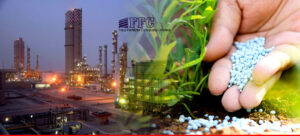
Islamabad, November 16, 2023 (PAKONOMY): In the intricate landscape of Pakistan’s agricultural sector, the fertilizer industry finds itself at a critical juncture, grappling with challenges that echo throughout the fiscal year 2023. This sector, integral to enhancing crop productivity, has historically been influenced by a dynamic interplay of factors, from crop varieties to policy frameworks.
Pakistan’s increasing demand for fertilizer has been historically driven by fertilizer-responsive crop varieties, expanded irrigation, and a supportive policy framework. The industry, bolstered by low-cost gas and a favorable investment climate, witnessed excess manufacturing capacity. However, recent shortages of gas and monopolistic practices have led to underutilization and increased reliance on imports.
Amid a challenging year for agriculture, the fertilizer sector faced a dichotomy during the fiscal year 2023. The shortage of fertilizers, particularly due to gas shortages and soaring prices, posed formidable challenges. While domestic production of urea, a key fertilizer, expanded, bringing hope to farmers, Diammonium Phosphate (DAP) faced persistent shortages, notably during the Rabi season due to lower imports.
The demand side presented a mixed bag of developments. Urea offtake experienced a 3.7 percent decline during the Kharif season but rebounded with a 4.5 percent increase during Rabi, compared to the previous year. In contrast, DAP faced significant challenges, with offtake declining by a staggering 44.7 percent during Kharif and 23.4 percent during Rabi.
M Sajjad, Senior Scientific Officer at the Pakistan Agricultural Research Council (PARC), attributes the lower fertilizer offtake, particularly for DAP, to the unprecedented surge in prices. International fertilizer prices, on a constant rise since the post-pandemic period, reached historic highs by June 2022. While some moderation occurred at the outset of FY23, the prices remained significantly higher than pre-pandemic levels, exacerbated by the depreciation of the Pak Rupee against international currencies.
The implications of fertilizer shortages and high prices are profound for Pakistan’s agricultural sector. Fertilizers are a vital input for crop production, and their scarcity, particularly DAP, can directly impact crop yields and food security. Elevated urea prices, driven by high gas tariffs, compound the challenges faced by farmers and the broader agriculture sector.
As Pakistan addresses the challenges of gas shortages and navigates the global fertilizer market, it becomes imperative for the government and stakeholders to explore strategies ensuring a stable and affordable supply of fertilizers for farmers in the years to come. The collaborative efforts of industry players, informed policy interventions, and a resilient approach will be key to securing the future of the fertilizer industry in Pakistan.